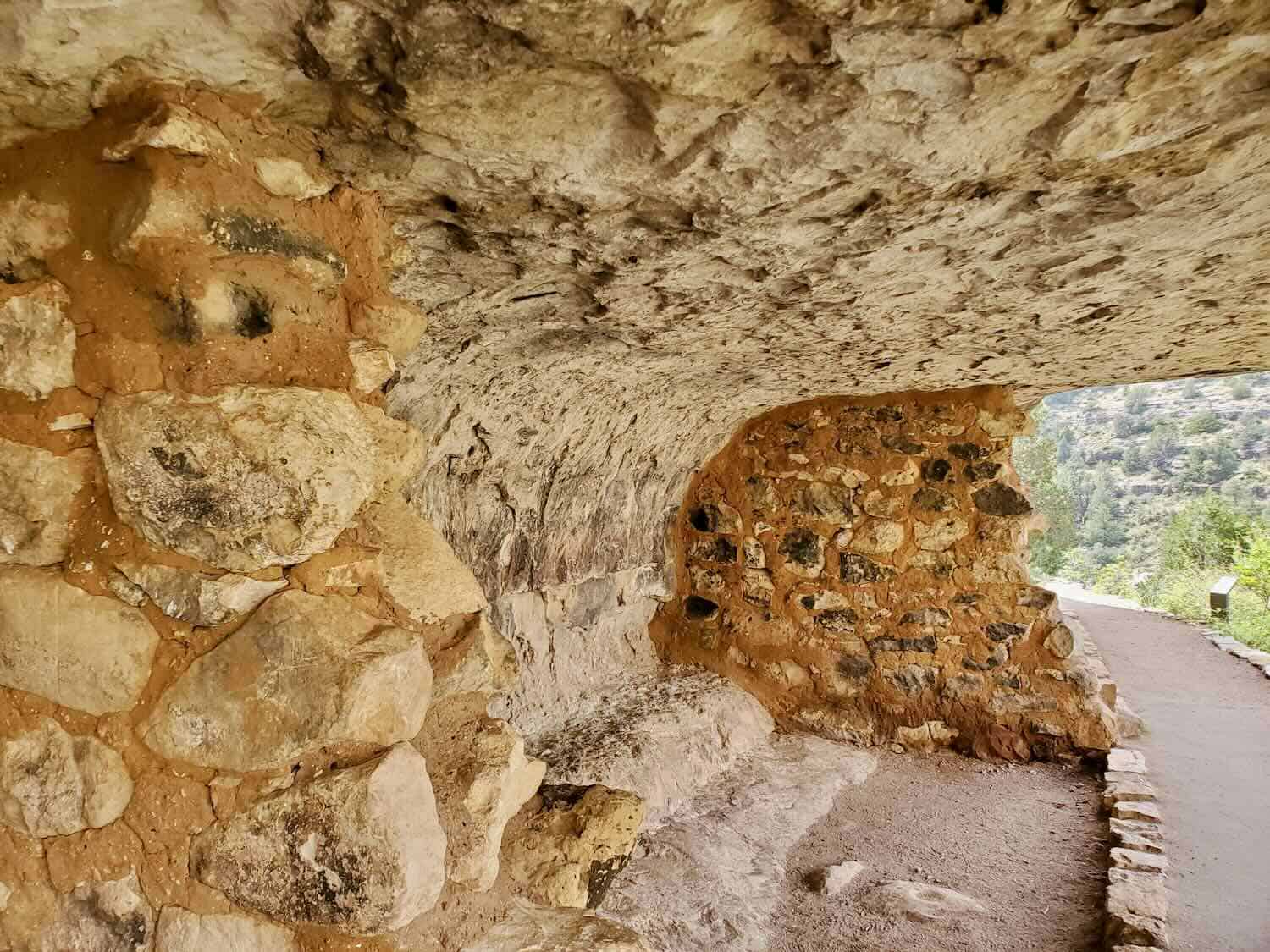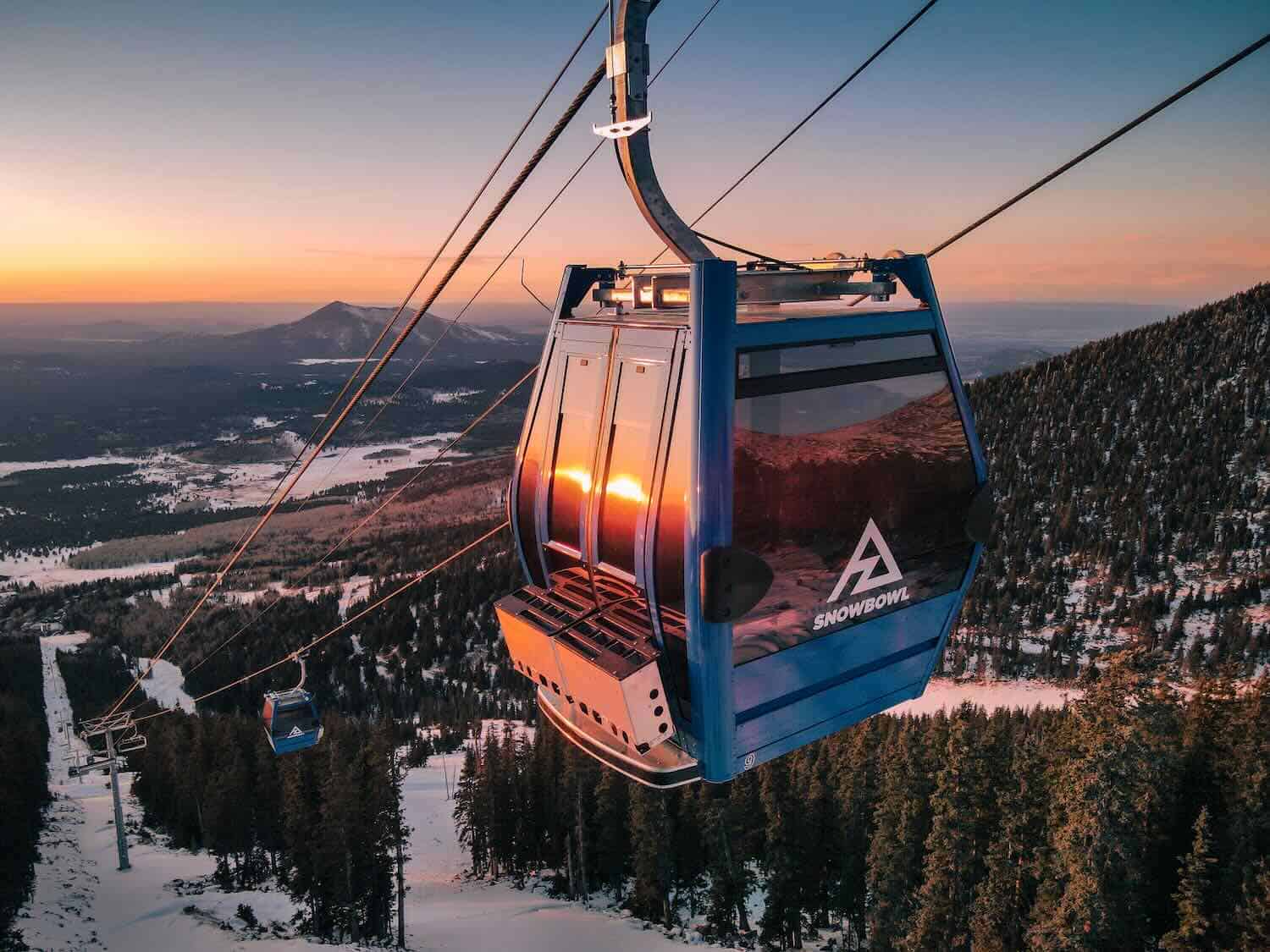Are you looking for tips on how to spend 3 days in Flagstaff, Arizona? You’ve come to the right place for your Flagstaff itinerary.
Wrtier and photographer, Teresa Otto, shares her experience exploring Flagstaff. This American Southwest city offers so much to see and do!
Get ready for national monuments, delicious food and some celestial surprises. Find out more with Teresa’s tips for the perfect Flagstaff itinerary that you can do in 3 days.
I confess, I’d been to Flagstaff twice before, spent the night, and headed out early the next morning to visit Canyon de Chelly the first time in 1994 and the Grand Canyon the second time in 2015. So, when Flagstaff’s tourism office hosted me and a small, lively group of fellow travel writers, I was excited to see why Flagstaff is called the “City of Seven Wonders.”
Seven natural wonders lie within 80 miles of Flagstaff. The Coconino National Forest — the world’s largest contiguous Ponderosa pine forest — surrounds Flagstaff. The San Francisco Peaks, Oak Creek Canyon, three national monuments, and Grand Canyon National Park are all a short drive away.
Flagstaff has its share of manmade wonders, too. Here are my suggestions for ways to spend three days in and around Flagstaff, Arizona.
Table of Contents
Day 1: Tour historic downtown Flagstaff

Route 66 passes through Flagstaff, but the city originated with railroad. The historic train depot is home to the visitor center and a great place to start your tour of Flagstaff’s downtown. The helpful staff can make recommendations on how to best explore the city based on your interests.
Take a Segway Tour

Our group toured downtown on Segways. It was a first for me, but it won’t be the last. AZ Segway and Pedal Tours’ owner, Blake Nabours, gave us Segway driving instructions and we were off. Blake pointed out historic buildings and narrated the history of Flagstaff.
Did you know this northern Arizona city was named for the pine tree stripped of its branches and used as a flagpole on July 4, 1876? The bare tree turned flag bearer served as a landmark for travelers. Those who stayed named the town Flagstaff.
Book your Flagstaff pedal tours here.
Explore on a Walking Tour

If self-guided tours pique your interest, Flagstaff has several walking and driving tours to follow including the historic Route 66 trail, the haunted Flagstaff walk, the brewery tour, and the Green Book historic walking tour.
While these independent walking tours charge a small fee ($19.95 per group, up to 10 people), it’s a great way to explore Flagstaff. Choose from two versions: Walk and Watch includes 12 video stops or Walk and Read using a pdf version of the tour.
I picked the public art tour and followed it the next morning at dawn. The murals glowed in the morning’s golden light. The streets were nearly free from cars and sidewalks had only the occasional jogger or dog walker.
Enjoy Flagstaff’s Art and Entertainment
A vibrant mural that echoes the area’s natural beauty and history is painted on the Orpheum Theater. The theater hosts entertainers or plays movies on a regular basis. You can also catch live entertainment on Heritage Square or an outdoor screening of a movie in the summer.
The first Friday of the month, local gallery owners open their doors in the evening for the ArtWalk. Galleries display work by area artists who are often on hand during the ArtWalk.
Beyond downtown, be sure to visit:
Day 2: Visit national monuments and museums
Two national monuments near Flagstaff showcase the ancient way of life on the Colorado Plateau. You’ll enjoy this Flagstaff day trip into ancient Arizona history.
Walnut Canyon National Monument: explore ancient cliff dwellings

Twelve miles east of Flagstaff, Walnut Canyon National Monument (official website) protects cliff dwellings that sheltered Puebloans who lived there centuries ago. The houses are tucked into every crevice and cave on both sides of the canyon and easily visible from the overlook near the visitors center.
For those who don’t mind taking the stairs, you can descend into the canyon and follow the looped Island Trail that passes by 25 ancient homes. Be prepared for the climb out of Walnut Canyon.
I took advantage of some of the overlooks and benches on the way out of the canyon to rest and reflect. I also drank plenty of water due to the high desert environment.
Museum of Northern Arizona: learn more about the First Inhabitants

After exploring Walnut Canyon, I paid a visit to the Museum of Northern Arizona (official website). So far I had only traveled 3 miles from Flagstaff. The museum houses artifacts collected from archeological digs at both Walnut Canyon and Wupatki.
The Museum of Northern Arizona has also curated fine examples of traditional beadwork, handwoven rugs, and Native American art. Dinosaur footprints found during a recent construction project are the most recent addition to the museum.
Wupatki National Monument: visit a pueblo

About 800 years ago, the red rock pueblo you see on a visit to Wupatki National Monument (official website) was the biggest and tallest structure around. Nearly 100 people called the pueblo home.
A paved trail leads to an overlook of the pueblo, a ringed ball court, and the distant painted desert. Once an agricultural community, Wupatki was also a marketplace with turquoise, copper, shells, and even parrots trading hands.
I chose to take the short, unpaved trail to the ruins. Ancient builders incorporated giant boulders into the pueblo which originally had 104 rooms. Within the rooms you’ll see grinding stones left behind when the indigenous people moved on, perhaps in search of better farmland.
If you’re interested in a ranger-led hike through ruins that are only accessible on foot, you can put your name on the list for the strenuous 18 to 20-mile Crack in Rock Pueblo hike. This popular two-day backpacking expedition in April and October is awarded to lottery winners.
Wupatki National Monument is located about 41 miles from Flagstaff. Combined with a visit to Museum of Northern Arizona and Walnut Canyon National Monument made for a fun day of history and archaeology.
Day 3: walk the trails, look through a telescope
For those who love the great outdoors, Flagstaff is a four-season destination with year-round recreational opportunities. A trail system weaves its way through Flagstaff and connects with the Arizona Trail that stretches from Mexico to Utah.
If you happen to stay at Little America Hotel (book here) like I did, you can take a looped trail through stands of Ponderosa and look for a gray and white Abert’s squirrel that has tall, tasseled ears.
Ride the Arizona Snowbowl gondola

The city is nestled against the San Francisco Peaks that top 12,000 feet. The Arizona Snowbowl gondola, which whisks downhill skiers up the mountain from November to April, offers spectacular views all the way to the Grand Canyon on a clear day.
I visited in the fall and islands of golden aspen trees seemed even more brilliant among the pines of the Coconino National Forest.
A short hike from the gondola leads to overlooks. For those unaccustomed to the high altitude, the hike may be difficult in the thin air.
Several strenuous hikes leave from the Arizona Snowbowl parking lot and lead to Humphreys Peak, the tallest of the San Francisco Peaks. Humphreys Peak is also the tallest mountain in Arizona at 12,637 feet.
Walk the Lunar Landmarks Trail
Every Apollo astronaut who walked on the moon, trained around Flagstaff first. The self-guided Lunar Landmarks Trail highlights these training sites, including the Astrogeology Science Center and Meteor Crater. Pick up a map at the visitors center.
Explore Sunset Crater Volcano National Monument
My group also visited Sunset Crater Volcano National Monument (website), 19 miles from Flagstaff. Its otherworldly 950-year-old lava flows served as a testing ground for the lunar rover and space suits prior to the Apollo 11 launch.
Sunset Crater Volcano is one of about 600 volcanoes in the San Francisco Volcanic Field. A paved trail gives a good introduction to the terrain and geology of volcanoes while the short, easy, but unpaved A’a Trail gets you right in the middle of the lava field.
Visit Lowell Observatory

We headed back to Flagstaff for dinner and a show of the celestial variety. In 2001, Flagstaff was designated the first international dark sky city.
Thanks to Lowell Observatory, Flagstaff had been a popular place for stargazing long before the dark sky city designation. Founded in 1894, the observatory sits atop Mars Hill on the edge of town.
My group viewed both Jupiter and Saturn from one of the observatory’s telescopes. During a walk around the campus, I could see the Milky Way stretching above me with the naked eye. Counting shooting stars from the Draconid meteor shower was an added bonus.
And just when I thought things couldn’t get any better, they did. Kevin Schindler, Lowell’s historian, shared the story of Pluto’s discovery by Clyde Tombaugh here in 1930. The Pluto Discovery Dome houses the telescope Tombaugh used to identify the planet.
Cartographers mapping the moon in the 1960s used another telescope on campus, the Clark Telescope. If you peer through its eyepiece on a guided tour, you’ll be following in the footsteps of astronauts who also used the telescope to study the moon before landing on it.
Where to stay in Flagstaff

I stayed at the stylish and impeccable Little America Hotel, a family-run hotel on the edge of Flagstaff. The hotel has large rooms, an onsite restaurant and bar, pool, and walking trails that link to the city’s walking trail system.
For winter, Little America Hotel becomes winter wonderland complete with Santa’s Workshop and Mrs. Claus’ Bakery. This is an ideal getaway for you and your grandkids.
Conveniently located downtown, the Residence Inn by Marriott has suites with a sitting area and kitchen. It is dog friendly and within walking distance to restaurants, breweries, and entertainment.
Flagstaff restaurants

I ate nothing but amazing food in Flagstaff. I especially enjoyed the Silver Pine Restaurant in the Little America Hotel, Tinderbox Kitchen (upscale farm-to-fork food), and Josephine’s Modern American Bistro (delicious scratch-made food in a cozy setting).
For more casual meals, I noshed at Lumberyard Brewing Co. (salads, burgers, and beer brewed onsite), Pato Thai, and Pizzicletta that’s partnered with Dark Sky Brewing Company.
Next Time
Three days flew by. There wasn’t time to visit Slide Rock State Park in Oak Creek Canyon, 25 miles south of Flagstaff and seven miles north of Sedona. A visit to the historic homestead and the red rock canyon tops my list for the next Arizona visit.



